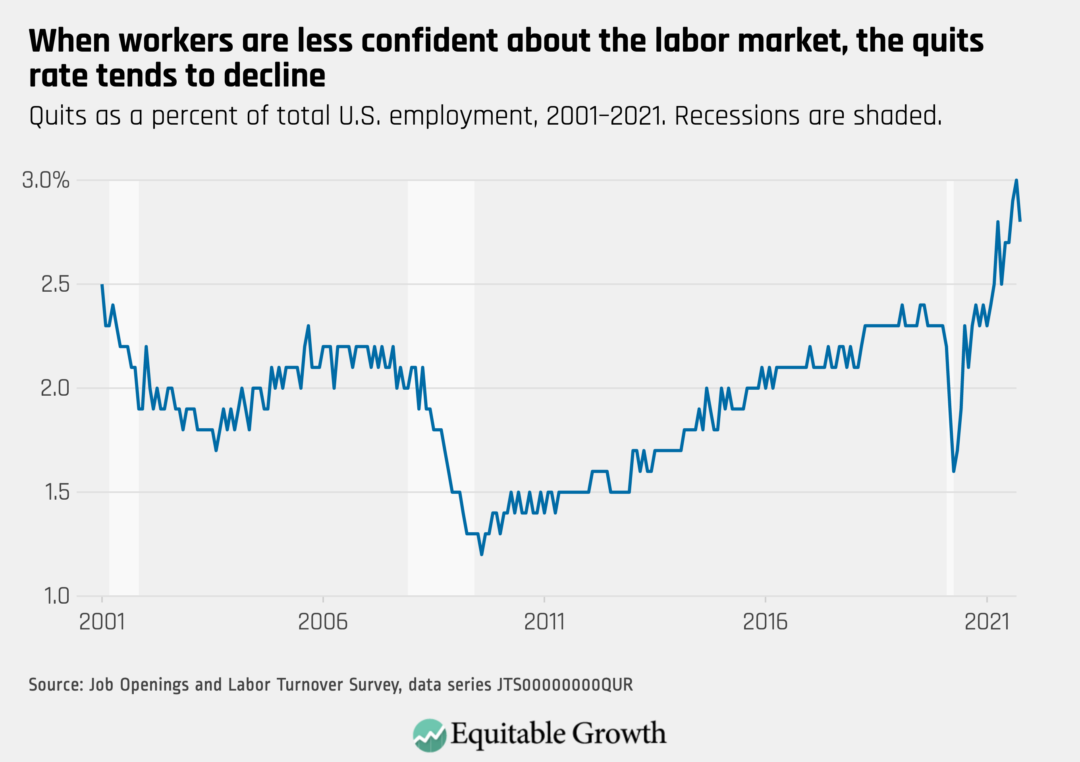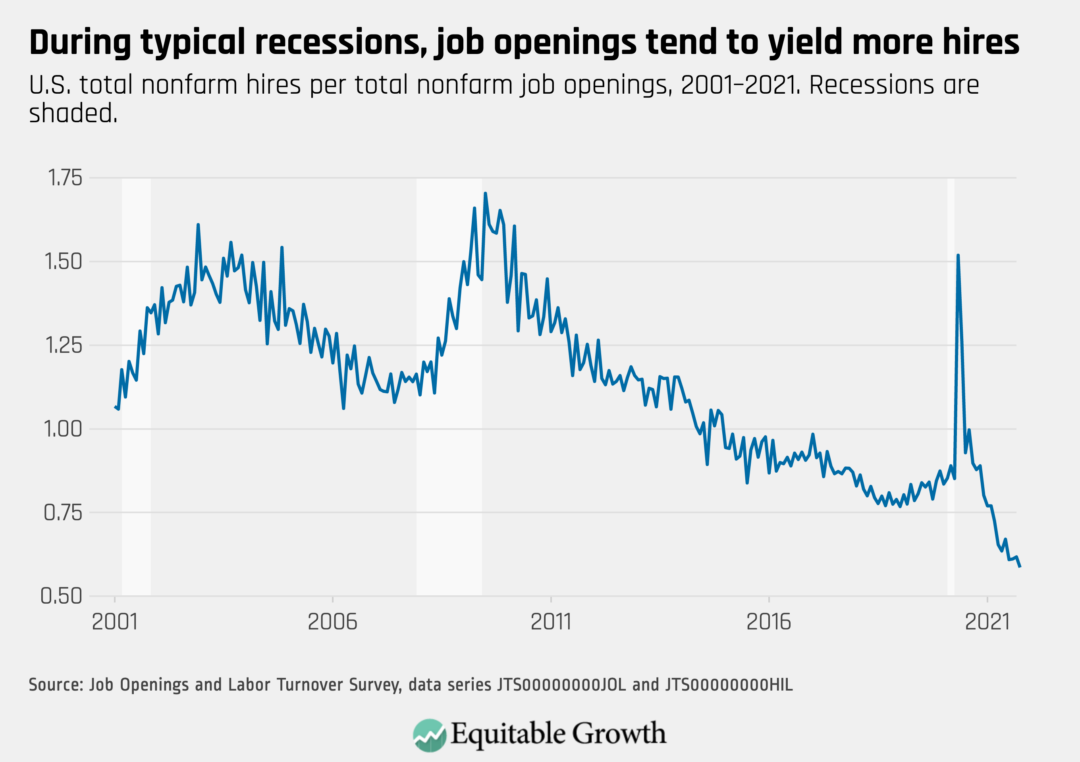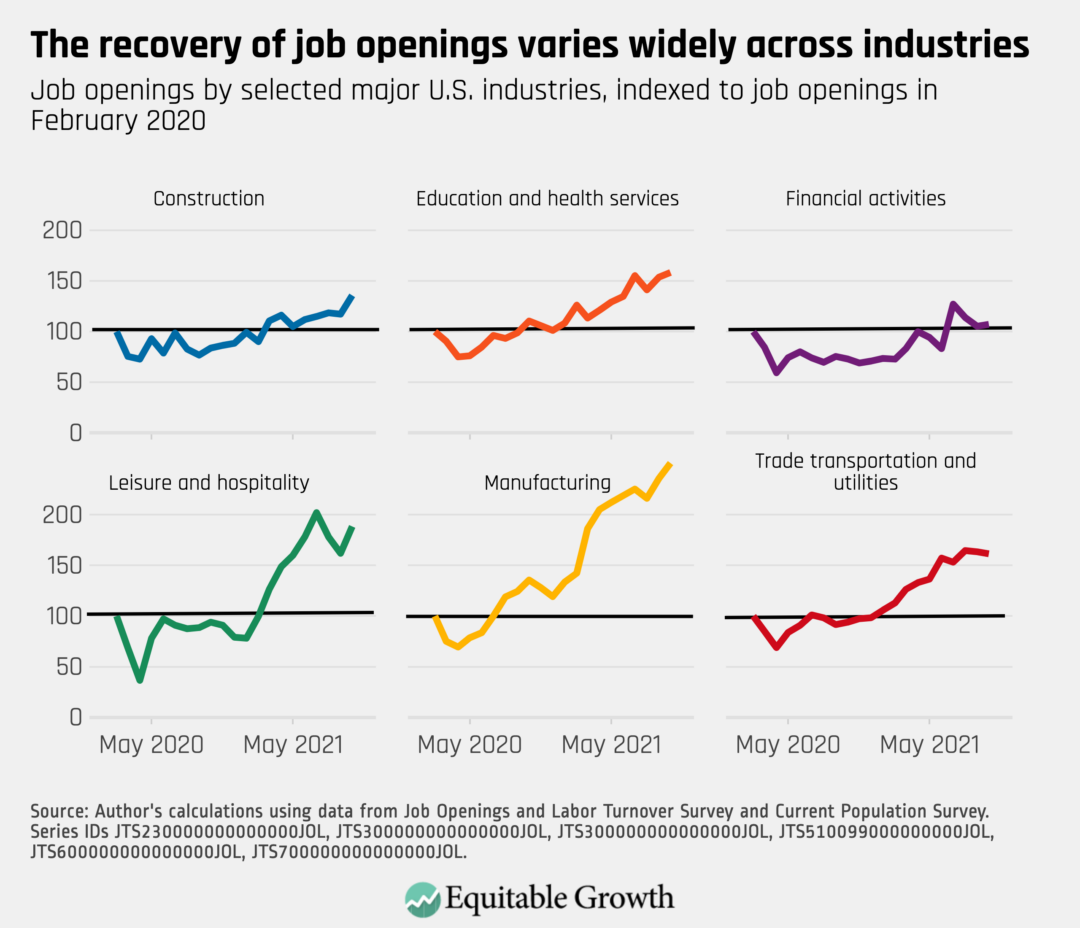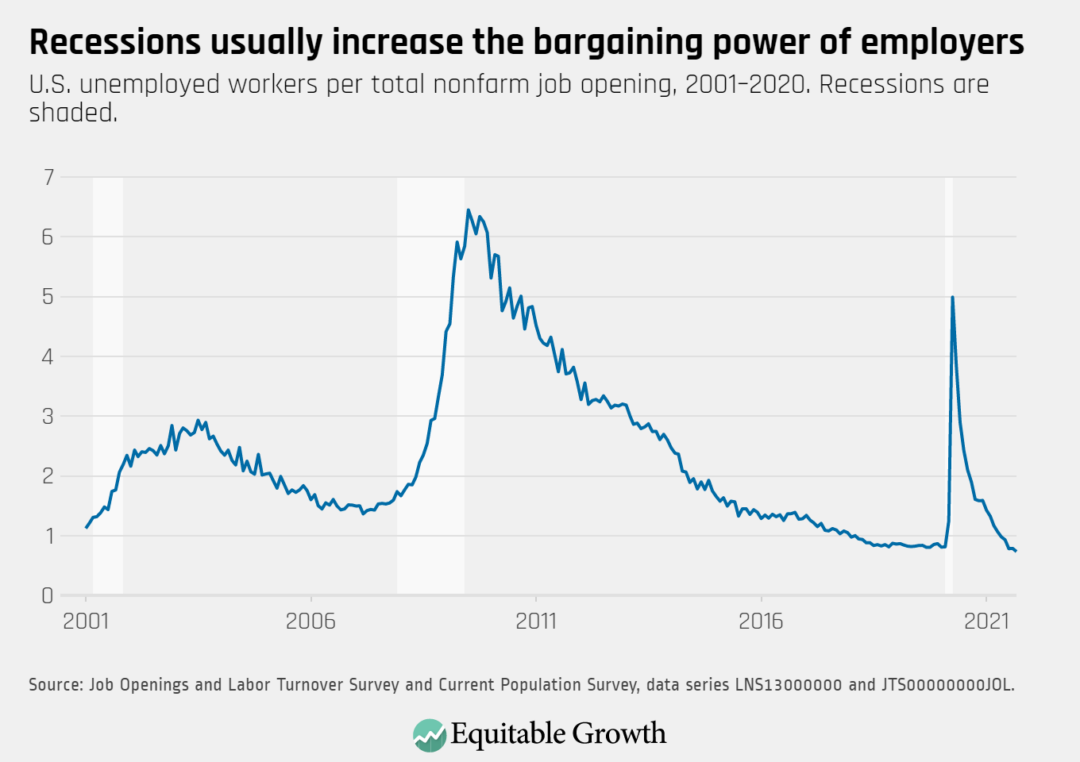JOLTS Day Graphs: October 2021 Edition
The quits rate declined to 2.8 percent as 4.2 million workers quit their jobs in October, down 205,000 from the previous month, but remains well above typical levels.

The vacancy yield fell further as job openings (11 million) rose and hires (6.5 million) stayed relatively constant in October.

Job openings rose by 431,000 in October, with growth in several industries such as construction, manufacturing, and leisure and hospitality.

The ratio of unemployed-worker-per-job-opening remains extremely low, falling from 0.72 in September to 0.67 in October. At the same time, 255,000 workers left the labor force in October.

With the unemployment rate declining to 4.6 percent and the job openings rate increasing to 6.9 percent, the Beveridge Curve continues to move in atypical territory, reflecting the unique nature of the present job market.


